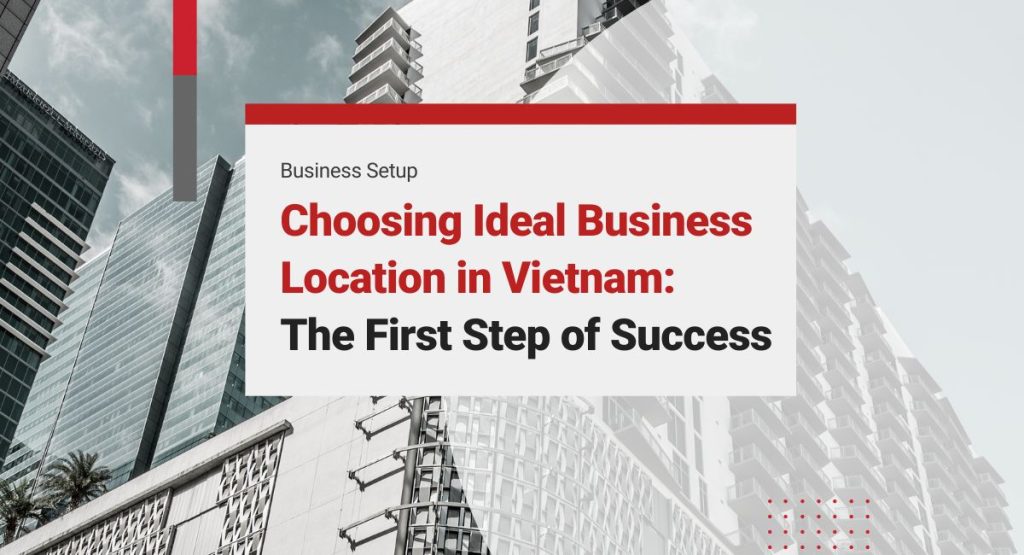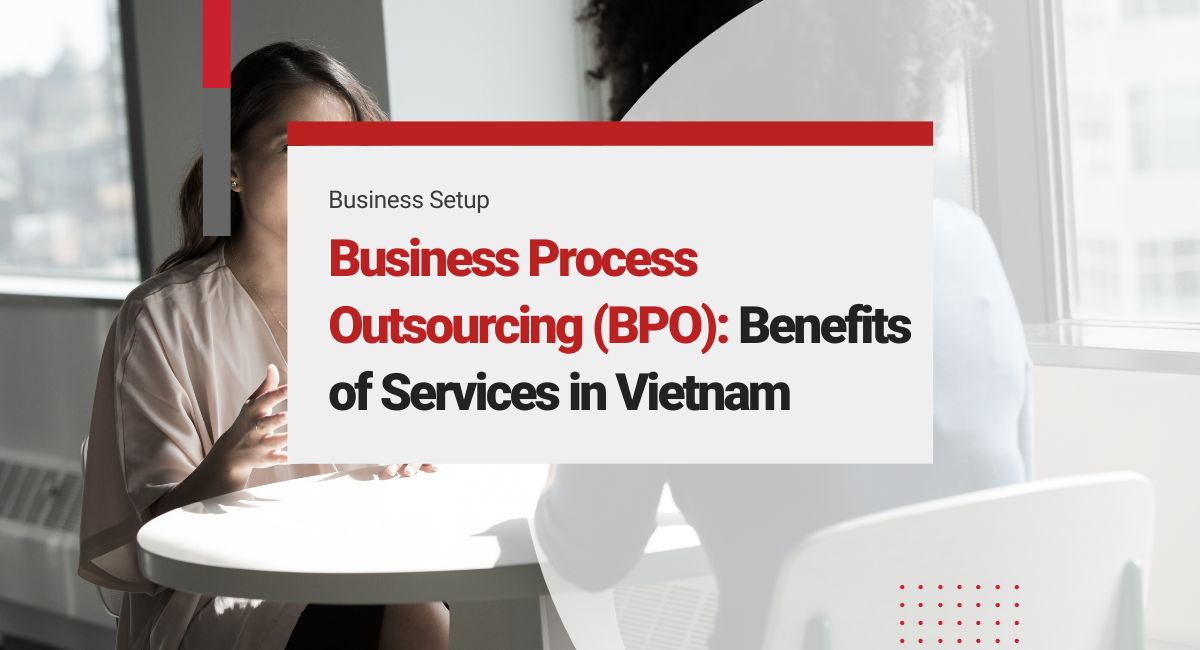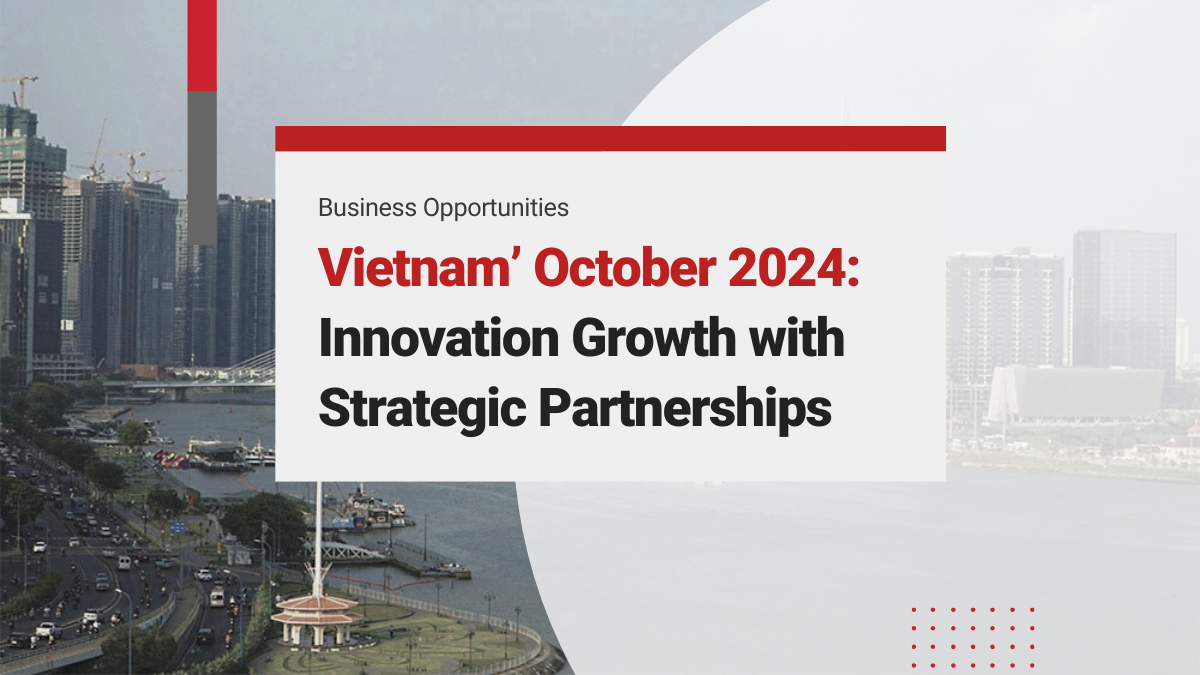Vietnam’s economy is growing fast, which is good news for foreign companies looking to do business there. Vietnam wants to become a big player in Southeast Asia by 2036 and a wealthy country by 2045. To succeed in this changing environment, choosing the right place to do business in Vietnam is very important. This article will help international investors make smart choices by giving them information about different places to do business in Vietnam.
Investing in Vietnam? Check out Company formation services
The Diversity of Good Business Locations in Vietnam
North, Central, and Southern Regions: Key Differences and Advantages
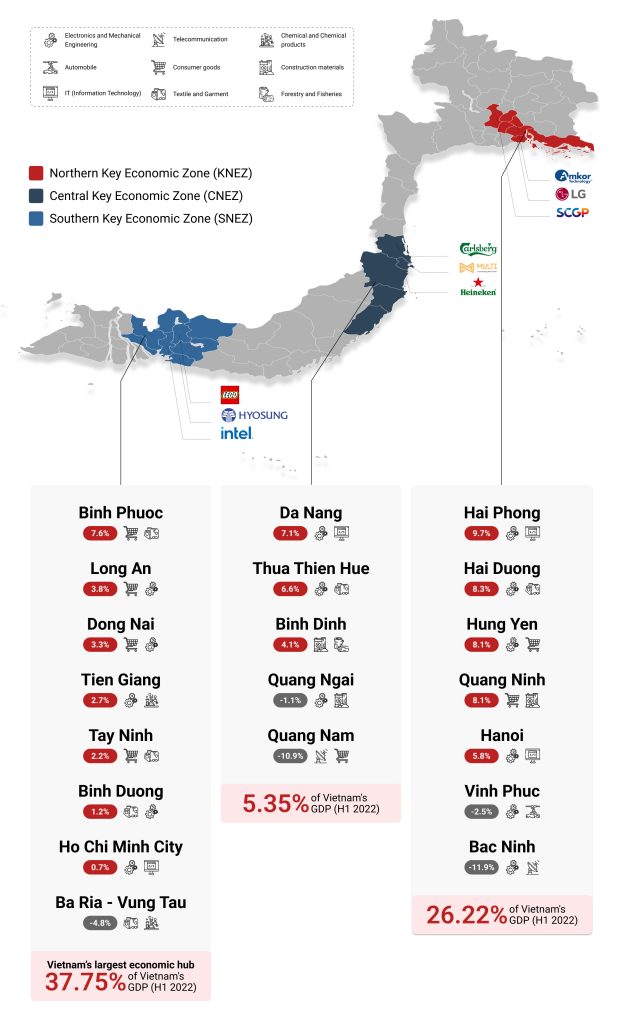
The North
The Northern Key Economic Zone (NKEZ) consists of 25 provinces. This region encompasses 7 key provinces Hanoi, Quang Ninh, Hai Phong, Hung Yen, Bac Ninh, Hai Duong, and Vinh Phuc. Strategically situated in close proximity to China, Vietnam’s Northern economic powerhouse serves as a dynamic center for businesses seeking to increase their manufacturing endeavors in Vietnam.
Such businesses can capitalize on lower labor costs in Vietnam while maintaining a strategic connection to the Chinese market. Businesses prefer the northern region because it allows easy import of raw materials and goods from China. The region has witnessed a surge in investments, particularly in heavy manufacturing and petrochemicals.
Cities such as Hanoi and Hai Phong stand as beacons of this concentration of expertise. They boast of a substantial pool of qualified workers and institutions that supply specialized labor forces. While the North’s focus on heavy manufacturing offers a lucrative advantage to investors in that sector, those pursuing different industries, such as information technology (IT), might not reap the same benefits from these specialized networks. Moreover, the availability of land resources in Northern Vietnam has become a burgeoning concern. This sets it apart from more land-abundant regions within the country.
The Central
The Central Key Economic Zone (CKEZ) has a cluster of 5 pivotal economic zones. The region includes Da Nang, Quang Nam, Thua Thien Hue, Quang Ngai, and Binh Dinh. Light industry projects such as food processing are the key industries here.
The Central region’s investment landscape boasts a unique advantage characterized by a less saturated competitive environment. The region has fewer industrial parks when compared to its counterparts in the North and the South.
While the Central region exudes potential, its talent reservoir is relatively more confined. Technical professionals often gravitate towards North or South Vietnam, lured by greater opportunities.
The South
The Southern Key Economic Zone (SKEZ) comprises eight provinces and cities. These include the provinces of Binh Duong, Long An, Tien Giang, Binh Phuoc, Tay Ninh, Ba Ria-Vung Tau, Ho Chi Minh City, and Dong Nai. The region stands as the most magnetic epicenter for foreign direct investment (FDI) projects. The year 2017 alone listed a staggering 793 projects. Known as an industrial hub, the region has the most bustling economic zone in Vietnam.
An expansive population in the south provides an ideal playground for investors willing to establish their brand identity amongst Vietnamese consumers. Moreover, an intricate network of esteemed educational institutions is scattered around Ho Chi Minh City, brimming with an exceptional talent pool.
Despite the rich talent available in the South, there exists competition among employers. Vietnam also has a tiered system, with a monthly minimum wage ranging between US$125 to US$180. While metropolitan powerhouses like Hanoi and Ho Chi Minh City command higher minimum wages, Bac Giang, Phu Tho, and Vinh Phuc offer more modest levels. The average remuneration for industrial workers and managers varies between US$500 to US$2,000.
Economic Zones and Business Centers
Economic Zones
- Consideration of geographic location
The first crucial step for Foreign Investment Enterprises (FIEs) seeking to establish their businesses in Vietnam is choosing the ideal geographic location. The 2018 Provincial Competitiveness Index ranked Quang Ninh in the North, Long An, Dong Thap, and Ben Tre in the South, and Da Nang in the Central heart, as the most noteworthy provinces.
Industries tend to cluster in specific regions. For example, garment and textile manufacturing are prominent in both the North and South, while footwear and furniture production are concentrated in the South. For businesses involving trade with China, the North’s proximity might be advantageous. On the other hand, the South offers easy access to major ports and commercial hubs. Proximity to essential facilities like airports, seaports, major cities, highways, and borders plays a crucial role in decision-making.
- Infrastructure advancement
The significance of infrastructure in the success of industrial zones cannot be overstated. In the past, poorly developed infrastructure and management hindered the growth of certain industrial zones, underscoring the pivotal role of infrastructure in their prosperity.
As Vietnam’s appeal to FDI deepens, there has been a notable uptick in efforts to elevate transportation infrastructure in industrial zones to meet global standards.
Many industrial zones are strategically located along national highways, creating seamless connectivity to airports, seaports, and rail terminals. The 2018 Provincial Competitiveness Index (PCI) revealed that Da Nang, Binh Duong, Hai Duong, Ba Ria-Vung Tau and Vinh Phuc provinces earned the top spots for exemplary transportation infrastructure.
- Industry Types
Encompassing eight municipalities and provinces, the NKEZ centers its economic endeavors on agriculture. Notable participants in this zone include Hai Phong City, Hanoi, and the provinces of Hai Duong, Bac Ninh, Hung Yen, and Ha Tay.
The CKEZ is renowned for its thriving marine economy. In the coming years, authorities, within the CKEZ, are directing efforts toward elevating sectors like oil and gas, shipbuilding, logistics, and high-tech industries. This dynamic zone encompasses Da Nang City, along with the provinces of Quang Nam, Binh Dinh, Quang Ngai, and Thua Thien Hue.
Anchored by Ho Chi Minh City, this zone extends its reach to the provinces of Dong Nai, Binh Duong, Tay Ninh, Ba Ria-Vung Tau, and Binh Phuoc.
- Vietnam’s Free Zones
Vietnam-Singapore Industrial Park (VSIP)
Established in 1996, the Vietnam-Singapore Industrial Park (VSIP) stands as a benchmark for world-class industrial facilities. With a remarkable presence spanning six provinces in Vietnam—Quang Ngai, Hai Phong, Hai Duong, Bac Ninh, Nghe An, and Binh Dinh. This distinguished industrial park hosts a diverse range of investment ventures, prominently featuring electronics, automotive components, consumer goods, and pharmaceuticals.
Hiep Phuoc Industrial Park (HPIP)
Situated within the confines of Ho Chi Minh City’s Nha Be District, the Hiep Phuoc Industrial Park (HPIP) spans an expansive 4,000 hectares of prime industrial real estate. HPIP boasts of pre-established facilities and export-oriented activities, owing to its effective infrastructure.
Phuoc Dong Industrial Park (PDIP)
The PDIP is situated between the Trang Bang and Go Dau districts. It distinguishes itself as a pioneering hub for commercial and manufacturing endeavors in Vietnam. This innovation-driven and environmentally conscious free zone is home to several investment industries. These include biofuel, textiles, logistics, steel components, support services, and construction materials.
Dinh Vu-Cat Hai Economic Zone
Covering an extensive 22,540 hectares, the Dinh Vu-Cat Hai Economic Zone is located in Hai Phong. Machinery, communications, electronics, scientific equipment, chemicals, and electrical components constitute the primary sectors that flourish in this coastal free zone.
Business Centers – Top Cities to Start a Business
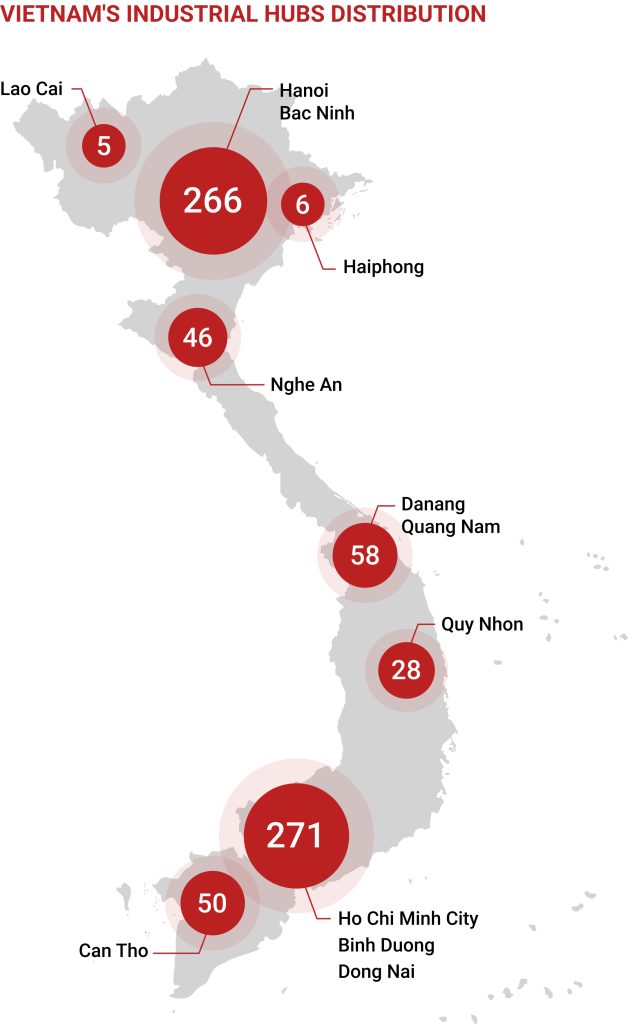
- Hanoi
Vietnam’s capital and the second largest city after Ho Chi Minh, Hanoi is the largest economy in the northern region. The city had strategically developed several major industries between 2015 and 2021. The focus is on sectors that harness cutting-edge technologies and exemplify substantial added value.
The Hanoi Department of Planning and Investment revealed that in 2020, the city’s Gross Regional Domestic Product (GRDP) stood at a substantial US$45 billion, a remarkable escalation of 1.5 times when compared to 2015. In terms of attracting FDI, there was an infusion of a total registered capital reaching a formidable US$35.9 billion across 6,384 sanctioned projects, up until 2020.
The city’s industrial landscape is reshaping, with a shift towards expansion of high-tech enterprises with robust export potential. These businesses include digital control, automation, robotics, nano-science, plasma technology, lasers, and biotechnology.
The city is home to 70 operational industrial clusters and grasslands, spanning 17 districts and townships. Hoa Lac Hi-tech Park, the first and largest in Vietnam, is also one of the most esteemed industrial parks.
- Hai Phong
Hai Phong, a major seaport in northern Vietnam, stands out for its advanced facilities and strong trade links. Positioned along the Gulf of Tonkin, it’s a key player in managing the nation’s trade flow with other countries. The city’s economy is diverse, encompassing industries like food processing, textiles, shipbuilding, steel, paper, chemicals, etc.
Hai Phong is actively transforming into a significant commercial center, notably through its various industrial parks. With a total of 12 industrial parks, eight located within the Dinh Vu – Cat Hai economic zone and four elsewhere, the city offers promising investment opportunities.
- Da Nang
Da Nang is the largest city in central Vietnam and a pivotal port, bordered by the South China Sea to the east. The city’s economic vitality thrives on key industries such as machinery, electronics, chemicals, and shipbuilding.
Da Nang City hosts an array of concentrated industrial parks, encompassing Hoa Khanh, Lien Chieu, Da Nang, Hoa Cam, expanded Hoa Khanh, and Da Nang Fisheries Services. Among these, the Lien Chieu Industrial Park, nestled within Da Nang City’s Lien Chieu district, spans a sprawling 1,200 hectares and is anticipated to attract foreign capital in high-tech industries, mechanics, and electronics. Other competitive industries of the city include retail and IT.
Da Nang benefits from its skilled workforce and over 51% of its population is employed. A robust infrastructure also plays a pivotal role in nurturing business growth and attracting investments.
- Bac Ninh
Bac Ninh province stands as a resolute industrial force within Vietnam’s economic landscape. The might of its industry and construction sector reigns supreme, commanding a commanding 75.9% share of the province’s GDP. This formidable presence far surpasses the service sector, accounting for 21.3%, and the agriculture sector, modestly contributing 2.8%.
The most significant industry in the city is electronics, translating to over 80% of the city’s industrial production value. As of June 2021, the province clinched the seventh spot among Vietnam’s FDI magnets, magnetizing 1,862 projects with a collective registered investment capital soaring to US$20.22 billion.
Some of the largest manufacturers have set up factories in the province, such as Samsung Electronics in Yen Phong I, Canon in Que Vo, Microsoft Mobile in VSIP, and Hong Hai (Foxconn) in Que Vo. Enterprises from 38 countries worldwide, including the US, Japan, and Korea, have poured over US$21 billion of FDI into Bac Ninh as of 2021 and another US$2 billion in 2022 so far.
Bac Ninh’s advantageous geographic position simplifies access to pivotal seaports, newly established international airports, and the Mong Cai international border crossing. The city also boasts a promising landscape for industrial real estate development.
- Ho Chi Minh City
With an impressive array of competitive advantages, Ho Chi Minh City stands tall as an FDI powerhouse. Its robust infrastructure and expansive transportation networks are its key pillars. The monumental Tan Son Nhat International Airport, a pivotal gateway, welcomes a staggering 17 million passengers annually. Meanwhile, the Saigon port network, a maritime titan, ranks among Vietnam’s premier commercial ports. With 11 industrial zones and half of their land available for rent, the city offers promising avenues for business growth and expansion.
The city boasts a vibrant intellectual ecosystem, housing a multitude of esteemed institutions, research centers and think tanks. Key industries and sectors include electronics, food processing, textiles, and garment and chemical industry. Primary industry parks include Saigon Hi-Tech Park, Hiep Phuoc Industrial Park, and Tan Tao Industrial Park.
- Binh Duong
With its strategic business location serving as the gateway to Ho Chi Minh City, Binh Duong plays a pivotal role in the development of the southeastern part of Vietnam. The city boasts a diverse and robust economy that centers on manufacturing and services. Its key industries encompass textiles, footwear, garments, food processing, electronics, and furniture. Competitive industries in the city include technology and agriculture. The province stands as a sanctuary to industrial parks and export processing zones. Some of these are Phong Phu Industrial Park and Binh Duong Industrial Park.
Binh Duong reaps the benefits of its strategic business location within the burgeoning southern central economic zone. The region’s visionary Smart City project underscores its commitment to sustainable development. However, an influx of workers into crucial industrial parks has led to an uneven distribution, leaving some regions of the city with a dearth of workforce.
- Dong Nai
Dong Nai province in Southeast Vietnam is a key player in the southern critical economic region. The province has successfully attracted investments in various sectors. This includes electronic component manufacturing, textile and garment production, and the manufacturing of technologically advanced industrial goods.
Prominent industrial parks in the city include Long Duc Industrial Park, Song May Industrial Park (both of which are home to over 100 companies), and Amata Industrial Park (a hub of over 200 companies).
- Can Tho
Can Tho stand as the largest city in the Mekong Delta, boasting both economic prominence and cultural significance. It is renowned as a gateway to the floating markets, a major tourist attraction in the region. Can Tho’s landscape is rich in agricultural products such as fruits, rice, and fish. Among the notable industrial parks in Can Tho, Tra Noc 1 and 2 industrial parks stand out.
Read More: Why do Vietnam’s Industrial Hubs become attractive to foreign manufacturers?
Factors to Consider when Searching for a Business Location
There are several crucial factors to consider while selecting the right business location:
Accessibility
Ease of access is very important when it comes to ensuring deliveries. The right location of the business entity is also crucial when recruiting employees. Proximity to main roads and transportation hubs can streamline operations.
Security
The safety of your premises affects insurance costs and security measures. Assess crime rates in potential areas to make an informed decision while selecting the location for your business.
Competition
Proximity to competitors can either positively impact your business or cause an impediment. The idea is to either foster collaboration or trump rivalry.
Business Rates
Carefully assess the financial implications of a location, including rent, taxes, and utility costs, to ensure that the location is affordable. Hidden expenses like deposits and parking fees should be factored in to ensure your budget aligns with the chosen location.
Skill Base
Evaluate the availability of skilled workers in the area. A strong talent pool can be a significant asset, while areas lacking in required skills may hinder growth.
Potential for Growth
Plan for the future by assessing whether the chosen premises can accommodate your business’ growth and increased demand. Opt for a business location that aligns with your long-term business goals to avoid costly relocations.
Common Mistakes when Choosing a Business Location
To steer clear of potential pitfalls, encountered while choosing a business location, avoid these common mistakes:
- Don’t fall for a prime location, or a busy area without assessing whether your target customers actually need your product or service. Ensure your offering aligns with the preferences and needs of the local population.
- Selecting a location without conducting thorough financial projections can be detrimental. Prior to signing a lease, make realistic projections to check feasibility, while considering all aspects.
- Don’t let price be the sole determining factor. Consider convenience for your customers alongside the cost.
- Assuming a location’s suitability can lead to risky decisions. Research extensively, utilizing available tools and resources. Investigate the area’s dynamics, including existing anchor stores and future development plans.
- Succumbing to pressure from real estate agents, acquaintances or family members can lead to hasty decisions. Remember to conduct due diligence at your own pace, considering your investment and your future.
- Entrepreneurs need not navigate this process alone. Seek guidance from available resources and local partners. Leverage experts to analyze your situation, conduct necessary studies, and guide you toward the optimal choice.
Conclusion
The process of selecting the optimal business location in Vietnam holds immense significance for the success of any business. With its swiftly advancing economy and inviting investment climate, Vietnam emerges as an enticing prospect for global investors. Making well-informed decisions requires a meticulous analysis of the merits and demerits of distinct industrial park locales, while also factoring in the distinctive sectors thriving in each region.
By collaborating with local experts and undertaking prudent location choices, international investors are poised to unlock Vietnam’s economic potential and also be successful in this dynamic market.

clients worldwide

professional staff

incorporated entities in 10 years

compliance transactions yearly
Learn the Right Setup for Business
Expansion in the Vietnam
Frequently Asked Questions
How Area Business
- Could you please clarify your question? Are you asking about business conditions in a specific area or something else?
How Many Time Zones Does Vietnam Have
- Vietnam has one time zone, which is Indochina Time (ICT), UTC+7.
What is the best location for business?
- The best location for a business in Vietnam depends on the industry and operational needs. Ho Chi Minh City is the commercial hub with strong infrastructure and market access, ideal for services, tech, and trading. Hanoi is the political center and suits businesses targeting government projects or northern markets. Industrial zones in provinces like Binh Duong, Dong Nai, and Bac Ninh are optimal for manufacturing due to lower costs and ready-built facilities.
What is the business location?
- A business location refers to the physical or registered address where a company operates or is legally established. In Vietnam, this location must be declared during the company registration process and must align with zoning laws and business activity requirements. It can be a commercial space, office building, or other premises permitted for business use.
